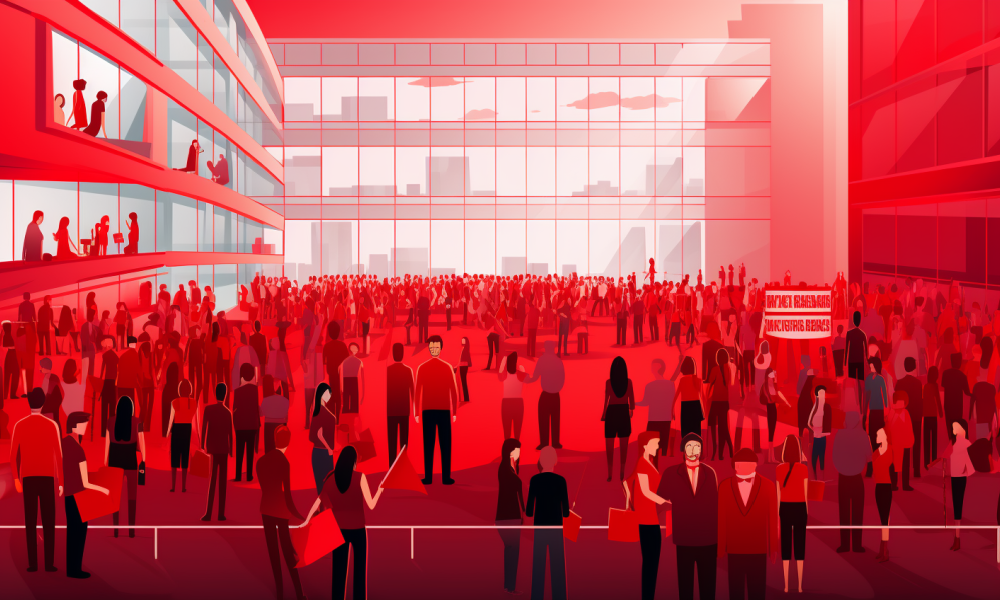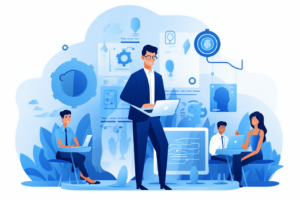How to build a talent community to engage, upskill, and reskill your talent pool
- 6 Min Read
Liz Sebag-Montefiore provides eight crucial pillars to consider when designing a talent community that drives immediate competitive advantage
- Author: Liz Sebag-Montefiore
- Date published: Jul 4, 2023
- Categories

The talent crisis is real in every corner of the world and talent competition is going to remain a part of our reality. One answer is to cultivate a talent community. These networks exist within the organization with a strategy centered on workforce agility. They facilitate an internal gig economy.
This is about building an engaged talent community of people who align themselves with your organizational vision so you can upskill and reskill for the future.
Talent optimization with a talent community
The economic climate, inflationary pressures, and constrained growth opportunities all add pressure to a difficult business environment. We need to create innovative growth strategies and recognize that workforce agility and resilience have never been more important.
Talent optimization is about building an agile, resilient workforce with a focus on the right people, in the right job at the right time. It is about creating a workforce of right-fit talent that can be developed to meet current and future needs.
This means we need to build jobs with human-centered approaches. We need to personalize jobs tailored for the talent, rather than molding the person to fit the role. Yes, you can buy external talent at a price. But in-house talent is a much better and more effective choice. They will outperform an external hire. Grow your talent.
Build a talent community
Add depth and breadth to your talent community. Attract great employees, develop them, retain them, and provide them with opportunities to grow. None of the suggestions below are quick fixes. Talent management and optimization is a long-term strategy imperative, not an in-the-moment response to a hiring problem.
Employee experience
What do people say about the organization on social media after they leave? Your reputation matters when you are sourcing talent. Poor reviews on candidate sites will tell against you. Remember that leavers will be out there talking to recruiters and your competitors so it’s better if they talk you up.
Exit interviews
For every leaver, conduct an exit interview. This should not be a tick-box exercise. Instead, it should be an in-depth, confidential discussion about the employee experience and reasons for leaving with someone the leaver trusts. Ensure that leavers you would have preferred to keep know that you value them, will miss them and that you plan to keep in touch.
Stay in touch
Keep in contact with your leavers. You may, in due course re-employ someone who has accrued useful experience and contacts elsewhere. Stay in touch with good candidates whom you don’t hire for the same reasons and follow up with them when a vacancy arises that might suit them. Maintain connections with potential recruits within your community.
Network
Network with stakeholders, suppliers, associates, head-hunters, professional and trade associations, ex-employees, and retirees, to ensure they know what the organization is doing, and current talent needs. Cultivate relationships with local training facilities and initiatives. Network with competitors too.
Focus on diversity
We know the value of DE&I initiatives. Think about candidates with alternative backgrounds and qualifications. Think about those with vocational qualifications and those willing to study as they work. Use your contacts with local training providers to set up internships and work experience placements, even inexperienced students bring new perspectives and all parties learn from the exchange.
Reskill and upskill
Use your in-house talent to grow and thrive in the future. Ensure a good grasp on bench strength and internal talent mobility and then build a culture with a focus on continuous learning and development. Facilitate employee development so your workforce is equipped and skilled for the future.
Rethink your structure
Don’t rely on what worked in the past and don’t be hidebound by traditional hierarchies or outdated models. Look at alternatives and new initiatives. Many organizations underestimate the talent within their ranks. There are all too many workers who have relevant, useful skill sets and could do a great job in a different, bigger, or better role if given the opportunity.
Rethink roles
Discard fixed ideas about who will fit in, where they come from, or what their CV looks like. Rethink and focus on talent and potential. Do you need a graduate? Look at apprenticeships and in-work training options, distance learning, in-house and external mentoring, job shadowing, and lateral career moves. If you want employees who display agility, flexibility, and commitment, you must model it for them.
Grow your talent community
The more experience an employee can build, the more fulfilled and likely to stay they are. This is not just about promotions and pay rises, but a broader range of career opportunities so that employees can acquire cross-company experience and skills.
Create an environment where it is easy to develop a career rather than move on to grow. Enable employees to work on skills that they use in their current role, or even something they are interested in either for their future career or for personal interest so that they can control their career planning and switch it up whenever they are ready.
If an employee believes their organization prioritizes values and rewards learning, they are more likely to have high levels of engagement. Engagement drives retention and enhances organizational performance. There are clear bottom-line business benefits for organizations with effective employee career development strategies in place.
Forward-thinking HR
The last few years have significantly changed what it means to be an employee. leaders need to adapt quickly to manage employees in new ways, including an increased focus on trust, rather than command and control in developing new ways of working.
Skills and capability matching are crucial in the current climate. With a robust talent community on hand, a growth-oriented employer can capitalize on the agility and empowerment enabled by a sustainable culture predicated on meaningful worker development.
We need to adapt to deal with the pressures inherent in the current environment and take steps to help employees adjust and thrive, especially as the pace of change, particularly technological change, is constant. An effective approach relies upon ensuring we listen to employees and actively seek feedback. Encourage openness and candor to support collaboration and innovation.
Employers who have good visibility to all the different types of talent at their disposal, with a true line of sight to how employees complete work, with what skills, performed where, and at what value, will have an immediate and significant competitive advantage.









